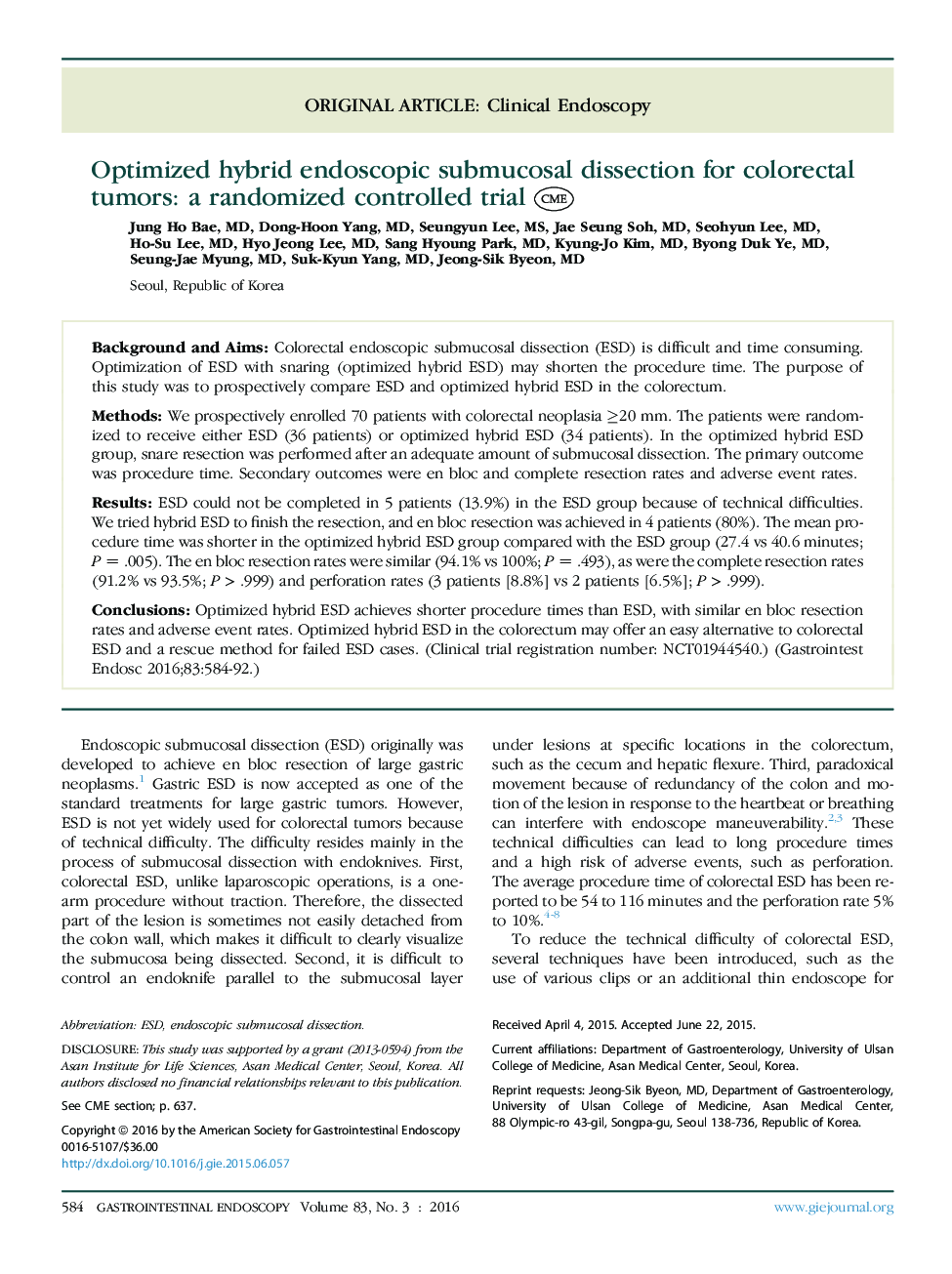| Article ID | Journal | Published Year | Pages | File Type |
|---|---|---|---|---|
| 3302641 | Gastrointestinal Endoscopy | 2016 | 9 Pages |
Background and AimsColorectal endoscopic submucosal dissection (ESD) is difficult and time consuming. Optimization of ESD with snaring (optimized hybrid ESD) may shorten the procedure time. The purpose of this study was to prospectively compare ESD and optimized hybrid ESD in the colorectum.MethodsWe prospectively enrolled 70 patients with colorectal neoplasia ≥20 mm. The patients were randomized to receive either ESD (36 patients) or optimized hybrid ESD (34 patients). In the optimized hybrid ESD group, snare resection was performed after an adequate amount of submucosal dissection. The primary outcome was procedure time. Secondary outcomes were en bloc and complete resection rates and adverse event rates.ResultsESD could not be completed in 5 patients (13.9%) in the ESD group because of technical difficulties. We tried hybrid ESD to finish the resection, and en bloc resection was achieved in 4 patients (80%). The mean procedure time was shorter in the optimized hybrid ESD group compared with the ESD group (27.4 vs 40.6 minutes; P = .005). The en bloc resection rates were similar (94.1% vs 100%; P = .493), as were the complete resection rates (91.2% vs 93.5%; P > .999) and perforation rates (3 patients [8.8%] vs 2 patients [6.5%]; P > .999).ConclusionsOptimized hybrid ESD achieves shorter procedure times than ESD, with similar en bloc resection rates and adverse event rates. Optimized hybrid ESD in the colorectum may offer an easy alternative to colorectal ESD and a rescue method for failed ESD cases. (Clinical trial registration number: NCT01944540.)
